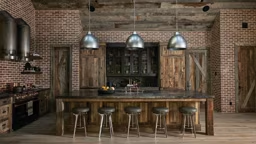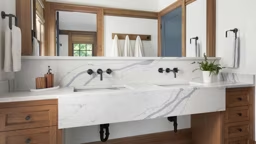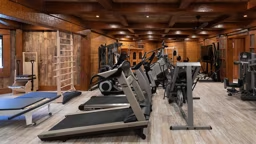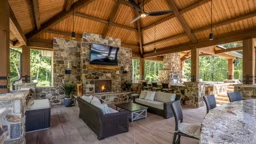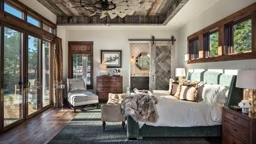

Today’s kitchen is hailed as the social epicenter of the modern home, playing host to all activities from family breakfasts to elaborate dinner parties, so it’s all about function. We consulted with four design experts — author Ralph Kylloe, architects Edward Carr and Dennis Lippert and floor plan columnist Katherine Salant — for tips on maximizing space and function in your timber frame kitchen.
1. Visualize your space.
While you’re planning, analyze how you’ll use each nook and cranny so you don’t end up with cabinet sizes and shapes that you don’t need. And be sure to give some thought to where the trash receptacle should go. That tends to be an overlooked component of kitchen design.
2. Stay functional.
Don’t be seduced by beautiful fixtures at the expense of functionality, suggests Salant. “The most important thing is to design the room so you can fix a meal easily. Keep the sink, stove and refrigerator in close proximity so you don’t crisscross the room to cook.”
3. Stay practical.
Lippert’s recommendations are of a practical nature. He advises clients to include a built-in desk and shelves as a place to plan meals and store cookbooks. Even better: Add a computer for easy access to Internet recipes.
See also 8 Steps to a Smooth Timber Home Build
4. Maximize your counter space.
When it comes to kitchen-island design, Carr offers this advice: “An island (preferably about 4 by 8 feet) should include a small prep sink but no cooktop or other appliances to break up the countertop surface. This will maximize space available for food preparation.”
5. Make room for the ones you love.
“Make the kitchen large enough to accommodate two cooks, with at least 5 feet between the stove, island and counters so people can pass each other without bumping,” says Kylloe.
See also From Site Plan to Floor Plan




